The David Newman-Toker Neuro-Ophthalmology Collection contains great examination video and other resources relating to disorders of the brainstem and cranial nerves, including visual loss, double vision, and dizziness.
David Newman-Toker, MD, PhD, Associate Professor. Departments of Neurology, Ophthalmology & Otolaryngology, The Johns Hopkins University School of Medicine.
NOVEL: https://novel.utah.edu/
TO
Filters: Collection: "ehsl_novel_dent"
1 - 25 of 12
| Title | Description | Type | ||
|---|---|---|---|---|
| 1 |
 |
3-Component H.I.N.T.S. battery | Describes the 3-Component H.I.N.T.S. (Head Impulse, Nystagmus, Test of Skew) battery. A wide-angle view of the tests is followed by a close-up view. Please note that in the wide-angle view, the order of the tests is as would be typically conducted in practice (searching first for spontaneous nystagm... | Image/MovingImage |
| 2 |
 |
A New Approach to the Dizzy Patient | Best evidence suggests that a shift in emphasis in clinical assessment away from dizziness type and towards dizziness timing and triggers will probably yield more accurate and reliable diagnostic results, particularly for patients presenting with new, acute dizziness symptoms. This paper describes t... | Text |
| 3 |
 |
Acute Vestibular Syndrome Syllabus | This syllabus provides an overview of acute vestibular syndrome, a clinical condition condition characterized by dizziness of vertigo that develops acutely (over seconds, minutes or hours); may be accompanied by nausea/vomiting, gait instability, nystagmus, or head-motion intolerance . It describes ... | Text |
| 4 |
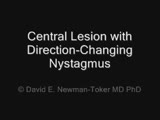 |
Central Lesion with Direction-Changing Nystagmus | With central causes of acute vestibular syndrome, it is not uncommon for the nystagmus to have a gaze-evoked component due to failure of gaze-holding circuits in the cerebellum or brainstem. In such instances, the nystagmus may reverse direction when the patient looks in the direction of the slow ph... | Image/MovingImage |
| 5 |
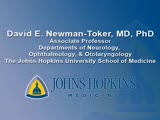 |
Dix-Hallpike Test for the Left Posterior Semicircular Canal | Shows the diagnostic Dix-Hallpike maneuver for the left posterior semicircular canal | Image/MovingImage |
| 6 |
 |
Episodic Vestibular Syndrome Syllabus | This syllabus provides an overview of Episodic Vestibular Syndrome (EVS), a clinical condition characterized by recurrent dizziness of vertigo that develops acutely (over seconds, minutes or hours); may be accompanied by nausea/vomiting, gait instability, nystagmus, or head-motion intolerance. Disea... | Text |
| 7 |
 |
Neuro-Vestibular Examination Syllabus | This syllabus provides an overview of the neuro-vestibular examination, including descriptions of the Head Impulse Test, VOR Cancellation Test, Dix-Hallpike Test and the Modified Epley Maneuver. | Text |
| 8 |
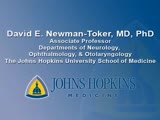 |
Penlight-cover Test | Illustrates the penlight-cover test used to compare spontaneous nystagmus with and without fixation | Image/MovingImage |
| 9 |
 |
Peripheral Lesion with Direction-Fixed Nystagmus | Typical spontaneous nystagmus associated with acute peripheral vestibular lesions is dominantly horizontal in vector and generally beats in one direction regardless of the eye position within the orbits. The nystagmus is usually present in the primary position, increases in gaze toward the direction... | Image/MovingImage |
| 10 |
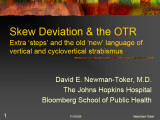 |
Skew Deviation and the Ocular Tilt Response | The objectives of this presentation are to provide an understanding of the current use of the terms "ocular tilt reaction" and "skew deviation," to create some familiarity with the anatomic and physiologic substrate of ocular tilt and skew, and to demonstrate how to distinguish between skew and isol... | Text |
| 11 |
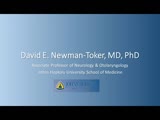 |
Supine Roll Test (Pagnini-McClure Maneuver) | This video illustrates bedside technique for the supine roll test (also known as the Pagnini-McClure maneuver) for horizontal canal benign paroxysmal positional vertigo (BPPV).This maneuver is specific for horizontal canal BPPV in the same way that the Dix-Hallpike maneuver is specific for posterior... | Image/MovingImage |
| 12 |
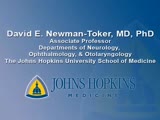 |
Vestibulo-Ocular Reflex (VOR) Cancellation | Shows the vestibulo-ocular reflex (VOR) cancellation test. Inlcudes a close-up view. | Image/MovingImage |
1 - 25 of 12
